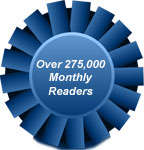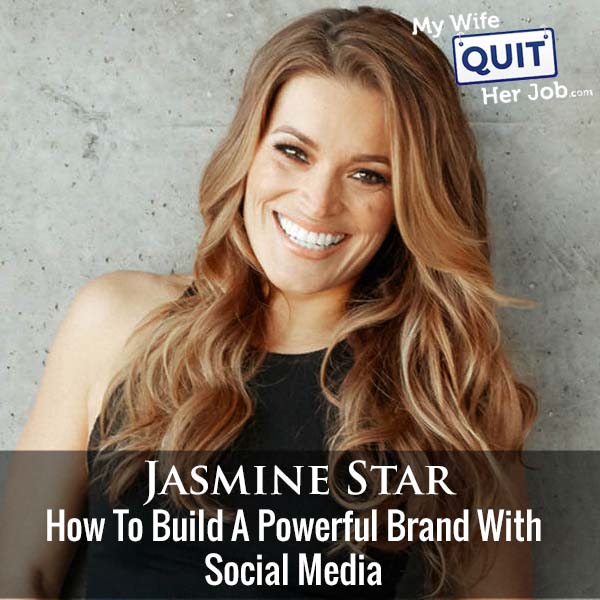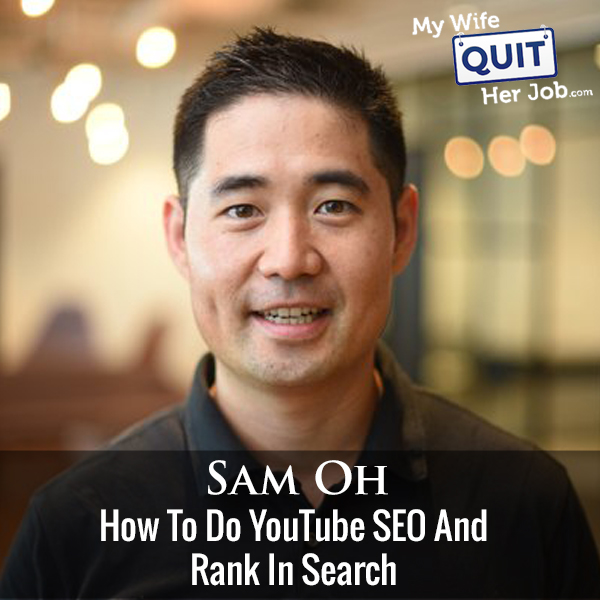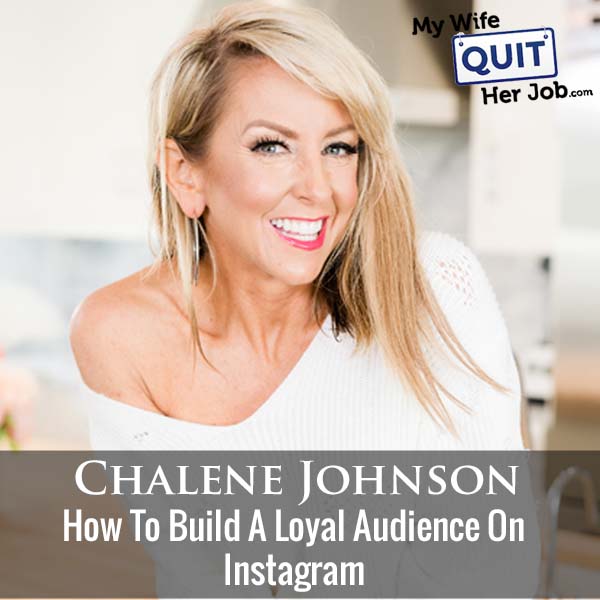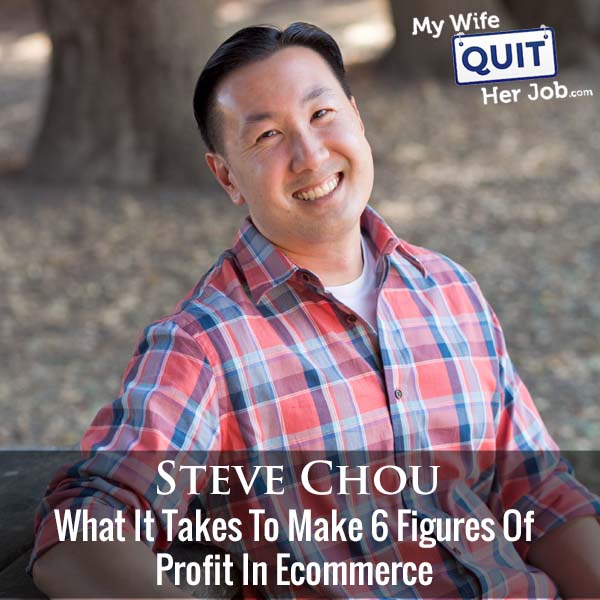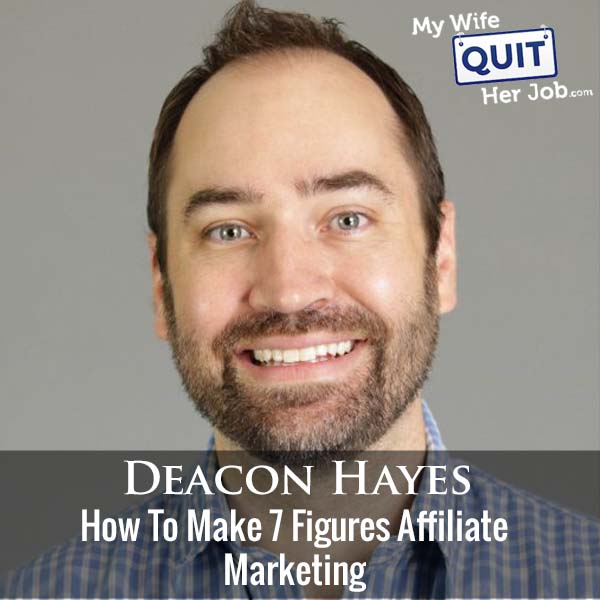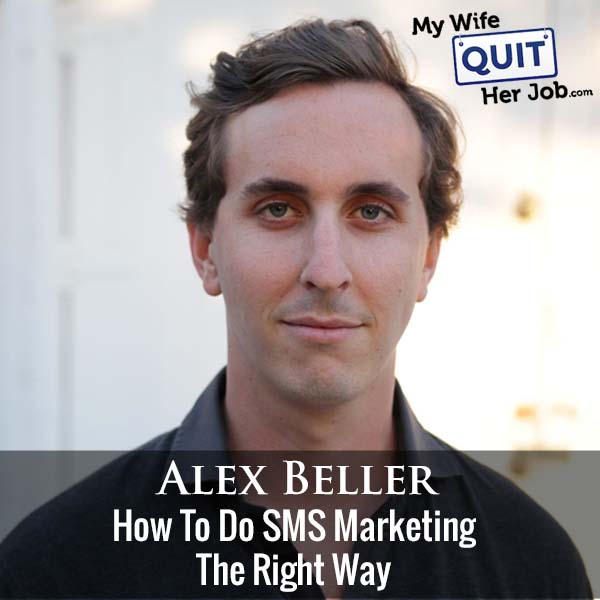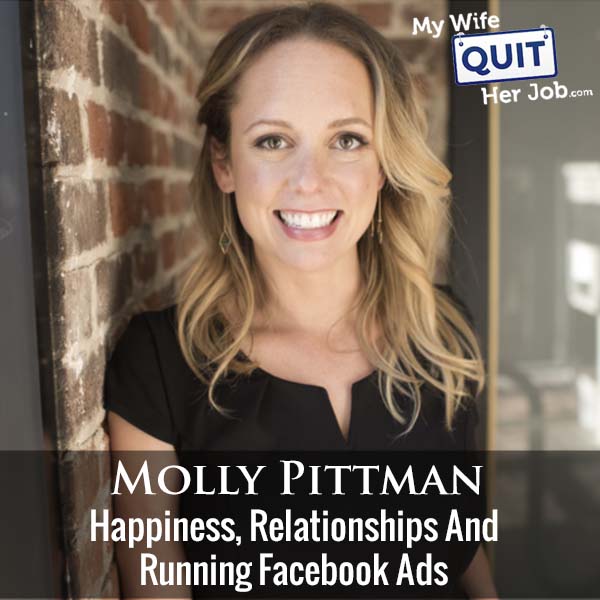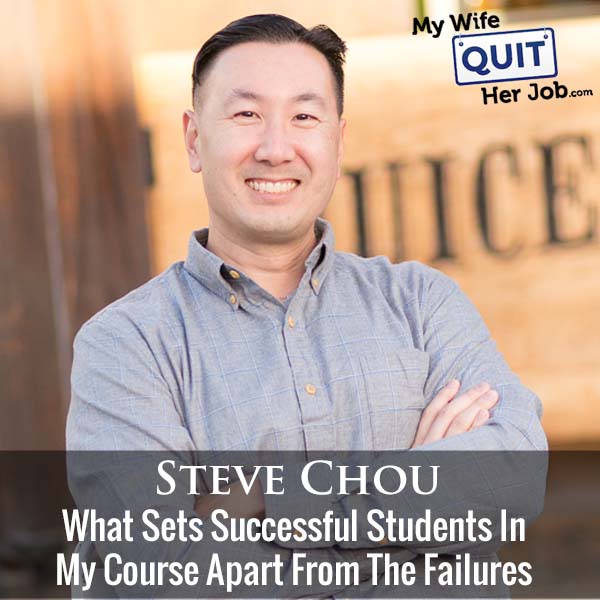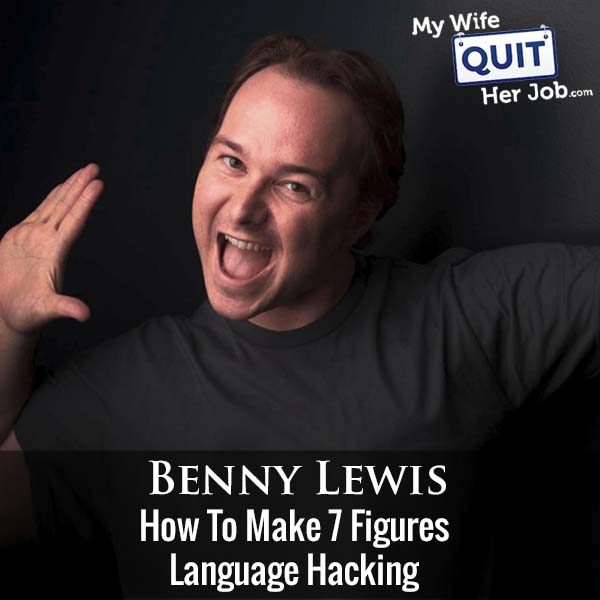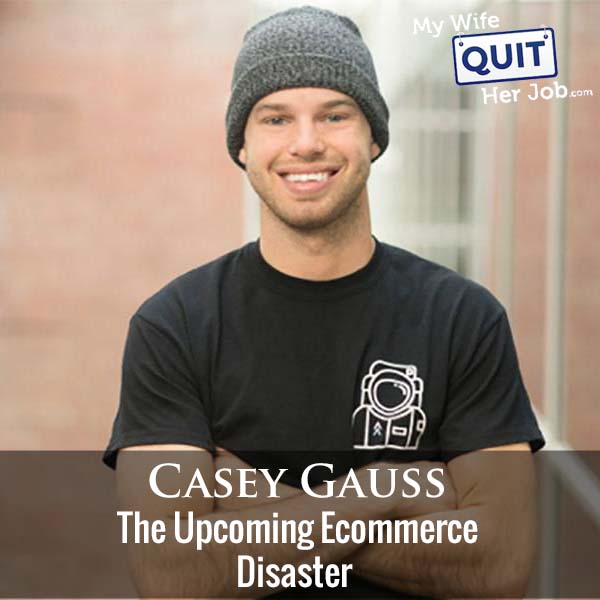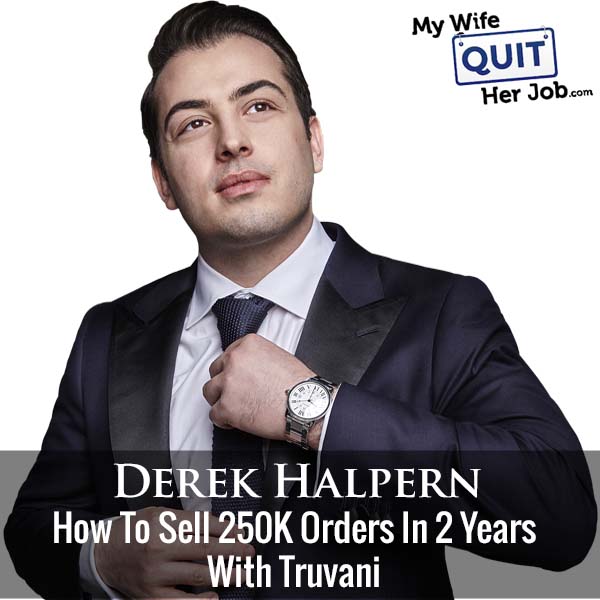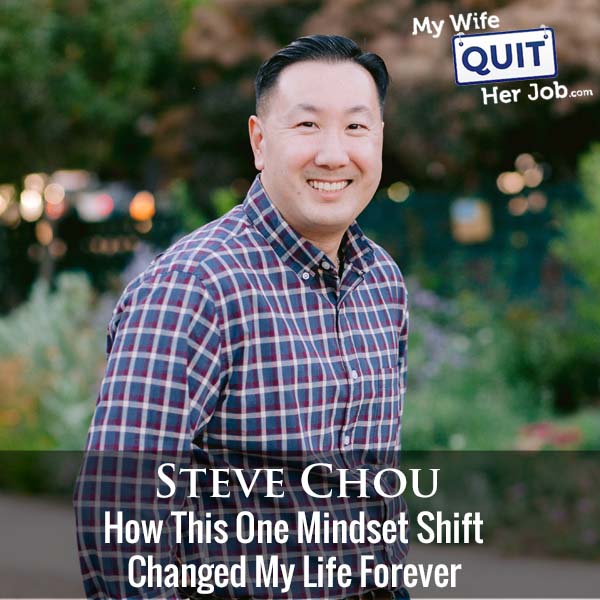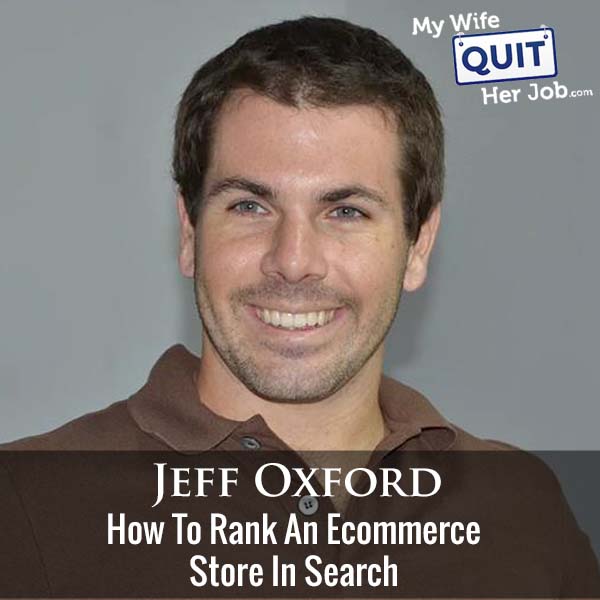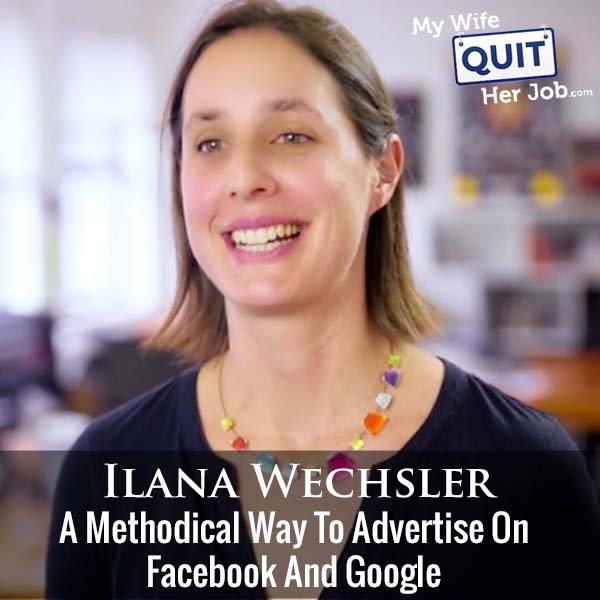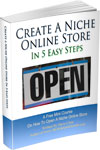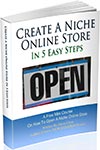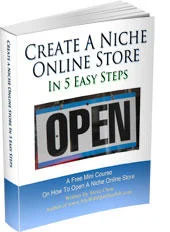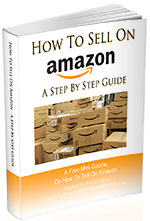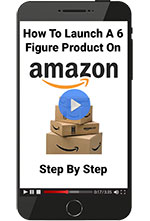Podcast: Download (Duration: 57:21 — 105.3MB)
Today, I’m thrilled to have my good buddy Mike Jackness on the show. Mike recently sold one of his ecommerce brands, ColorIt, for a 7-figure sum. But he’s been working hard starting a completely different brand called Tactical.com.
It’s a real treat to have Mike on the pod today and in this episode, we are going to discuss the right way to do content marketing for an ecommerce store.
What You’ll Learn
- How to launch a completely new brand from scratch
- The right way to do content marketing
- How to get traffic to your store
- Why you should keep your store separate from your blog
Other Resources And Books
Sponsors
Postscript.io – Postscript.io is the SMS marketing platform that I personally use for my ecommerce store. Postscript specializes in ecommerce and is by far the simplest and easiest text message marketing platform that I’ve used and it’s reasonably priced. Click here and try Postscript for FREE.
Klaviyo.com – Klaviyo is the email marketing platform that I personally use for my ecommerce store. Created specifically for ecommerce, it is the best email marketing provider that I’ve used to date. Click here and try Klaviyo for FREE.
EmergeCounsel.com – EmergeCounsel is the service I use for trademarks and to get advice on any issue related to intellectual property protection. Click here and get $100 OFF by mentioning the My Wife Quit Her Job podcast.
Transcript
You’re listening to the My Wife Could Her Job podcast, the place where I bring on successful bootstrap business owners and delve deeply into the strategies they use to grow their businesses. Now today I have my buddy Mike Jackness back on the show and Mike is the host of the Ecom Crew podcast. And recently I took a short road trip out to Las Vegas to visit Mike and we recorded a podcast episode along the way to discuss the latest in e-commerce. Now just a quick warning, this episode starts out a little bit echoey because Mike and I recorded this episode huddled in his office, which wasn’t that soundproof.
00:29
but the content in this episode is worth it. But before we begin, I want to thank Postscript for sponsoring this episode. Now, if you run an e-commerce business of any kind, you know how important it is to own your customer contact list. And this is why I’m focusing a significant amount of my efforts on SMS marketing. SMS or text message marketing is already a top five revenue source from my e-commerce store, and I couldn’t have done it without postscript.io, which is my text message provider. Now, why did I choose Postscript? It’s because they specialize in e-commerce stores and e-commerce is their primary focus.
00:58
Not only is it easy to use, but you can quickly segment your audience based on your exact sales data and implement automated flows like an abandoned cart at the push of a button. Not only that, but it’s price well too and with the holiday season rolling around, SMS is the perfect way to engage with your customers. So head on over to postscript.io slash Steve and try it for free. That’s P-O-S-T-S-E-R-I-P-T dot I-O slash Steve. I also want to thank Klaviyo who is also a sponsor of the show. If you’re behind on planning for Black Friday and Cyber Money, then Klaviyo is here to help.
01:28
Klaviyo is the ultimate e-commerce marketing platform for online brands of all kinds and all sizes. With email automation, SMS marketing, list growth tools, and more, you’ll get everything you need to build a strong relationship that’ll keep your customers coming back. And with the holiday season right around the corner, there’s no time like the present. Get up and running quickly with Klaviyo’s lightning fast integrations, pre-built marketing automations, and beautiful email templates. So whether you’re a billion dollar business or just starting out, Klaviyo is the e-commerce marketing platform for growth during the holidays and long after.
01:57
So get a free trial over at klaviyo.com slash my wife. That’s K-L-A-V-I-Y-O.com slash my wife. Now onto the show.
02:22
Welcome to the My Wife Quarter Job podcast. Today I have my good buddy Mike Jackness with me. He’s actually sitting right across from me right now. And what ended up happening is I just took a road trip just kind of out of the blue. think, did you invite me or did I invite myself? We’ll call it a little bit of both. A little bit of both. So Mike just moved into this incredible house in Vegas and he mentioned that he had this extra room in the back and I was like, sweet. I’ve been itching to get out of the Bay area. And Mike said, why don’t you come on over?
02:52
I don’t think he thought that I was going to take him up on that offer because I have kids who are in school, but turns out everything is virtual now. So it doesn’t really matter. And here I am. We’ve been here. I’ve been here for the past week. And while I was here, we may as well record some podcasts. Absolutely. We’ve gotten used to being hosts when we lived abroad for a while for a total of four years, between Costa Rica and the Cayman Islands, like all your friends, like even people you hadn’t heard from in like 10 years, want to come visit. And so it trained us to be,
03:20
to be good hosts and now we kind of love it and we have friends all over the country that we don’t get to see very often. So when they come visit it’s a pleasure. I this place is literally like a hotel. I’ve been calling it Jack Nis Lodge. Like it really is decorated like a hotel, like a fine hotel actually. And then the pool is out back, the kids love swimming. It’s been great. I’m glad you guys are having a good time. I’m glad you think so highly of our place. So what’s funny is this podcast almost didn’t happen even though we are both podcasters, Mike, podcast for Ecom Crew.
03:49
We could not get the mic set up. We’re used to having people remote and we literally spent like 30 minutes getting the sets We were play some circus music right now but we couldn’t get the licensing for it. All right, so it’s actually rare. Actually, you know what? When’s the last time you came on the podcast? It’s been a long time. It’s been a while. It’s been a long time. So I don’t wanna say it’s rare but I guess it is rare that you’ve come on. Mike always speaks at Seller Summit and he helps run the masterminds usually so everyone knows Mike. I think it just, you people get busy and…
04:19
as podcast host, you don’t really want guests repeating a lot, which becomes more and more difficult with every episode to find new people out there that you want to have on your podcast. So maybe we’re just getting desperate for guests at this point. All right. Well, I wasn’t going to go down that route, but it’s a real treat to have Mike here today. I thought holiday season is rolling around and I thought we’d just talk a little about e-commerce. Mike just recently sold his, one of his e-commerce brands, Color It, for a seven figure sump.
04:48
Is it disclosed? just or it was low seven figures. We were asked not to talk about the details. Okay. We’ve been respectful of that I mean when someone gives you seven figures and that’s all they ask you it’s Not that difficult to just kind of but you still have several other brands, right? We do we have a hot and cold therapy brand that we’ve owned since 2015 we have a offshoot of that in a way, which is Stuffed animals with hot and cold packs in them that also have a scent
05:18
They’re geared towards kids. It’s called Wild Baby. We have, I think, 12 different SKUs there, just different designs like a fox and a bunny and a dog or whatever. And then we also own Tactical.com, which I’m very excited about because it’s a content site that’s been ramping up very nicely lately. mean, our traffic is up almost 10x this year. I think we can do the same next year. And we have a brand, a tactical brand that kind of goes with that. And so one of the things I’ve been thinking a lot about
05:48
over the last couple of years is how am I going to continue to compete in the world of Amazon when I don’t want to do black hat stuff, you know, and everyone else around me is doing black hat stuff. How do I compete with these black hat type people in a white hat way and gaining an unfair advantage through, I mean, we’ll say unlimited, but it’s not unlimited, but a huge amount of organic traffic that continues to come in every day is a huge leg up and that’s what we’re going with.
06:16
So I don’t want to promote black hat tactics, but I’m just kind of curious of because you belong to MDS. MDS, Million Dollar Sellers. It’s a great group. If you are doing over a million dollars on Amazon, I highly recommend checking that group out. There’s a lot of really good people in there and lots of great tactics and everything’s discussed in there from the white hat stuff to the black hat stuff. And so it’s really opened my eyes up to the things that are happening in the world of Amazon.
06:45
kind of makes me hyper aware and also a little concerned. some people there are doing black hat stuff. I’m just kind of curious if anyone has gotten caught yet. Oh yeah, there’s people that get shut down all the time. Oh, for black hat stuff? Yeah, well it’s funny. I wouldn’t say this is funny because this is obviously serious, but often, I I would say at least once a week there’s someone in the forum saying that they got suspended. This happens a lot. it reminds me of that line out of Shawshank Redemption, like everyone in here is innocent.
07:12
I don’t know if you ever saw that movie, everyone’s in here is it, it? And so that’s typically the line, right? I didn’t do anything wrong, but I got suspended. And then people start asking questions and it kind of comes out that maybe they weren’t so squeaky clean anyway. But the thing that really worries me is there are people that are legitimately squeaky clean and they’re still getting their accounts suspended. And the way that’s happening more and more often is through like false IP complaints and things like competitors are able to do.
07:41
to get an account shutdown. And it’s actually really unnerving that I can send an email as basically an anonymous person and get anyone’s account shut down pretty much overnight. They’ll probably get it reopened, but at least for a couple of weeks, you’re in a rough spot. And then there’s also people that were doing other types of black cat things where it becomes progressively more difficult to get it reopened depending on how bad your sins were. Yeah, actually recently one of our friends, Amanda Wittenborn, she’s on the podcast.
08:10
She had 1300 top skews shut down and she’s the designer. That’s what’s scary about this. And there’s just one email about trademark infringement and everything went down and she still hasn’t gotten them back yet. It’s ridiculous. And here’s a mom with several kids at home and work from home now with her mom or herself and her husband. This is like their livelihood and it didn’t come easy to them. And these people, they were on five minute pitch. So we got to know them from that.
08:38
and they’ve worked their rear ends off. now some, can’t use this word on the podcast, so fill in the blank, person has, you know, shut them down with no good reason. You know, it’s like they’re saying that they copied their designs when we know that Amanda created this stuff herself, like she does everything herself and it’s ridiculous. so, but I mean, this is what you sign up for when you sell on Amazon. And if you think that you’re going to be different or immune to this stuff, you’re kidding yourself.
09:07
and it’s probably going to progressively get worse. so again, for us, we’re just constantly thinking about how can we prevent the worst from happening? How can we continue to compete in a white hat way? I think that when you have attention at a different source, if Amazon were to implode on us in some way, then we are able to redirect that traffic to our Shopify store, to Walmart or something else. always, traffic is always going to be money on the internet.
09:36
So I have my answer to this question, but in regards to just the black hat stuff, like your philosophy, I know my philosophy is I actually did some gray black hat stuff in SEO a long time ago and it worked for a long time. And then Google cracked down on it and I lost everything. For me, I don’t do any black hat stuff anymore because I’m thinking long-term. you the same way? Have you gotten? I’m slow. I don’t seem to learn my lessons very quickly.
10:04
I’ve been involved in multiple Google penalties and for us they were pretty tragic. I these were sites that were generating five figures a month in profit, so nothing insignificant and or were domain names that were worth mid five figures to well in the six figures. I you know I’m a domainer and so I’ve had what I would say are very expensive domain names punished as well and didn’t learn my lesson the first time, didn’t learn my lesson the second time when Penguin and Panda happened.
10:34
I really learned my lesson because it was just like a complete Armageddon for us. you know, the thing that’s, you know, I was younger and you learn as you grow up. And the thing that’s just so annoying, like if I could have just sat myself down and been like, instead of playing these games where you’re like just trying to cheat your way to the front of the line every day, and every day you’re trying to find like the new way to do that, instead of spending all your time and energy doing that, if I just spent my time and energy doing what Google ultimately wanted to begin with.
11:03
and didn’t worry about all the noise of the people that are around me that were doing certain things and complaining about how that wasn’t fair because they were getting away with it. If I just focused on producing really great content and running my site that way, mean, the same thing would have worked 20 years ago or 15 years ago as what works today. And so now we’re squeaky clean. And I look at the fact that we have 16 employees in the Philippines, one in the United States. You know, my life would kill me if our…
11:30
livelihood was turned upside down. So I think about these things and make sure that we’re doing things in the most white hat way possible. We have yet to request a link or get a link on tactical.com. been very, we probably have underdeveloped the site compared to what we could have done. And the same thing goes with Amazon because it’s binary. Like what you’re saying is like it works until it doesn’t. And then the day that it doesn’t, it’s not like, oh, business is down 25%, business down 50%. It’s like, you’re just out of business.
11:58
I and in the affiliate business that I was in before, as miserable as it was, it wasn’t like I had a million dollars of inventory that I’m now stuck with. And so the stakes are even higher in e-commerce because you have a warehouse full of inventory and it’s even more fun when you sell on Amazon because that warehouse full of inventory is an Amazon’s warehouse. And if you don’t get this rectified with the next amount of time, they’ll destroy your inventory and will hold onto your money. And so you just gotta keep these things in mind. Yeah, yeah.
12:26
So these days actually when I teach, both Mike and I, teach a class too. I actually advise everyone just to kind of validate on Amazon and then start creating content for their site. And this is the approach that you’ve started taking for Tactical, right? Yeah, and this is something we decided a little bit over two years ago to get really serious about. And it was easy for me to do that because we have a background in it. I was doing it since 2004 and I don’t know what happened. I wish I can go back again. It’d be fun to be able to go back and talk to your former self.
12:56
about all kinds of topics. But I’d like to sit down and be like, Mike, what were you thinking in terms of you got into e-commerce and just leave all these other skill sets behind as if one doesn’t work in harmony with the other. It was just like, oh, I’m in e-commerce now. I’m not gonna work on necessarily building content sites around my e-commerce sites. We had treadmill.com and we started selling treadmills online and didn’t really focus on content too much. And when we got ice wraps, the same thing kinda happened.
13:24
By the we were doing Colorate, I Colorate ranked really well for a lot of terms. We were focusing on content, but we didn’t have like a separate content site. And I think that’s important in some way. It’s more work. That was more a social media play, right? Colorate? Colorate had social media, but we also ranked for like adult coloring books and colored pencils and gel pens and why the benefits of color. We ranked for a bunch of stuff and the site still does. But as an e-commerce site, there’s a differentiation.
13:52
when it comes to content because it’s much more difficult to do link building. Google tends to trust the content slightly less. It looks like from e-commerce sites because they have an agenda, right? Or your competitors aren’t going to want to link to your e-commerce site. And so like how am going to get Crayola, for instance, to link to colorit.com? would never happen. How am I going to get a prominent like 511 Tactical type brand to link to tactical.com? Well, that’s probably easy, but to my…
14:20
or easier, it’s still a big brand, but I can get them to link to Tactical.com where I wouldn’t be able to get them to link to my e-commerce site. Wait, I thought Tactical was both a store and a… It’s not. We’ve actually made a freestanding content site. Oh, I didn’t know And we have our e-commerce brand and site separate from Tactical.com. Oh, you… What is the It’s called TacNiner. Tac… Oh, I see, I see. Okay, and you did that on purpose. We did it on purpose, yeah. Because I think that in…
14:47
mean, it was a unique situation. Tactical.com is kind of the category killer domain name, right? And Tactical is not a brand. Like I thought through this quite a bit. Like I can’t call my e-commerce brand or my physical product brand Tactical. I can never get a trademark for that. It doesn’t make any sense anyway. And so what made sense to me was, what could have also made sense was to make Tactical.com an e-commerce store that sells like a wide variety of tactical products.
15:17
But I didn’t want to get back in the drop ship game or I really didn’t want to get back into the game of selling other people’s products. And I didn’t want the conflict of interest of me selling my products alongside of theirs, kind of like Amazon does and some of these other things. And so after thinking through the whole thing, I thought that, know, tactical.com is a freestanding property that people that are into prepping and survivalism could come to and, you know, get on our email list and really kind of follow us from a social perspective and get the support of other e-commerce brands and.
15:46
in the niche and then have socially distanced e-commerce brand alongside of it kind of made the most sense for us. Interesting. So would you advise other people do that? Because if you put it on the same site, it’s building domain strength, right? Yeah. I mean, I think that there’s a lot of idiosyncrasies here, right? And it’s like hard to say that anybody should do A or B just carte blanche. I think it depends on like what type of domain you have. You know, for like color, right? We put it all together because
16:12
I didn’t want to necessarily go off and buy coloringbooks.com or something that, I like a lot of keyword domains or coloring.com or something like this. If I owned that domain name, my thought process might’ve been different. And so we were kind of, it was like a circumstance thing. We already owned a tactical.com. It wasn’t like I went out and bought it specifically for this. It was one of the domains that we had already purchased. And at some point, I like, I need to start using some of the assets that I have. And that’s how the whole thing kind of came together.
16:41
And then on color, was it blog.color? Was it on a subdomain? It was not on a subdomain. was on Shopify and it was, you know. Shopify’s blog. Shopify’s blog, which is not the best, but. I get this question asked all the time. I’m just curious what your opinion is. WordPress or Shopify blogging platform? Yeah, so I think that this is another one of these. I think that you want to look at, I a content site first or am I an e-commerce store first? And there’s a pretty big distinction. You know, it’s like if you’re.
17:09
If you’re a content site first, you’re gonna be focusing on this different type of content and it’s what people think of you first. They associate you with content first. And so in that case, I would have a WordPress blog at mycontentsite.com and then shop.contentsite.com as my Shopify store. I would actually separate them out. It would be the way that I would do it. your shop.contentsite.com
17:37
isn’t going to rank as well for the category pages and your product pages, but that’s okay because again, you’re a content site first and you probably aren’t looking to rank that category page as highly in Google. People are coming at you from a content perspective first. The best example that comes to mind, like I’m prepared and thinking about this, is someone like Alex, the girl we met. Yeah, travel fashion girl. Exactly. So she’s a content site first.
18:05
and she made some products. so people, like she makes packing cubes and things like that. She’s not necessarily looking for people that are searching for packing cubes that like land on her product page and buy that. know, it’s, if she’s going to rank for packing cubes, she would have a much better time ranking for packing cubes on her actual content site. And then sending people off to, you know, hey, buy them here. And then it goes to shop. And so like, and you could also do this with WooCommerce and have it all integrated, but I’m just personally a fan of Shopify. And so.
18:34
That’s just the way that I would set it up. And again, if you’re a product company first, then you have two options. For Color Right, we are a product company first, and then you could either, if you know you’re gonna be prolific with content, you could have blog.colorright.com and put your WordPress site over there. We just chose to keep everything integrated with Shopify, and that was more just.
19:02
It was 2016 when we made this decision. didn’t really think, we were really more just at the, mean, it’s hard to think back to that point. Four years seems like 40 years in e-commerce, it’s just because we buy so fast. But we were just like, is this even gonna work? And we were creating these products. We were like trying to do some market research. Are people gonna even feel like the things that we were doing with our products, were they good enough or better and differentiated in a way that people would wanna buy our product? And by the time we had that answer,
19:31
we had already ran some content and it was like, we’re not gonna now change over. And so we kind of were stuck with it at that point. So let’s talk about the content strategy for Tactical then. So how do you use that to drive traffic to Tech Niner? Yeah, so where we went wrong to begin with there, it’s another podcast for another day, but we launched Tactical without, I had thought through the fact that like, I own this domain name, I know I to make a content site.
20:00
This is like a bottomless pit of content. I’ll never run out of things to talk about. And we just started writing about tactical stuff and that can include like camping and fishing and hunting and survivalism and prepping and First of all, are you an expert in this subject at all? No. No. That’s another struggle, but no. And so what wrong is like we were just like all over the place for the first kind of like the first year that we were just throwing some content up there. We were a little bit all over the place and didn’t really think through like the branding and direction that we really wanted to go.
20:29
unfortunately. But I think it’s important to get started. We had started working on building a team of content writers and stuff in the Philippines. And think there’s something to be said about the fact that we just even got started, started writing content, started training them to write better content and how to rank. And at a certain point, we’re like, you know what? We need to focus on what the heck we’re doing here. We need to come up with a brand strategy and mission for what the site’s going to be. And the marine that we really came up with, where we wanted to go,
20:58
even as disjointed as what we started off was. Why did it matter that it was so disjointed actually? Because you can’t rank for everything on Google. Google won’t allow you to rank for everything under the sun. You’ve got to be concentrated in something. And we end up choosing to be concentrated in survivalism and prepping. That’s still a very deep, wide swath of content. I’ve never run out of stuff to talk about. But at least it’s focused on something that Google’s going to draw a circle around you and say, this is…
21:27
a survival site, it’s hard for them to draw a circle around you, because the circle’s so damn big around tactical. it’d be hard, there’s really probably no site out there that ranks for hiking and backpacking and fishing and survivalism and hunting. there might be something out there that’s massive that I’m not aware of, but very few things in Google these days are able to rank for everything under the sun. They’ve really penalized sites that try to do that.
21:54
Because typically they’re not writing really great content. They’re just writing content to write content. And it’s also hard to have a message and a direction and funnels and flows. So what kind of lead magnets and stuff are you gonna use on your site to get people to wanna sign up? And so because we’re focused on prepping and survival, all of our messaging is cohesive around those things. And so our lead magnets download our prepping and survivalism guide for a disaster.
22:22
be ready for earthquakes or be ready for a hurricane or be ready for the zombie apocalypse or whatever it might be. I’m like, can continuously have messaging around those things because people are most likely already coming, well, not most likely now, definitely coming to the site for subjects in that genre. You they’re looking at freeze dried food or how to like build a homemade mosquito trap or how to build an underground bunker or like what they should have in their bug out bag or how to build a fire on their own, like all these different types of topics that are surrounded or related to.
22:51
survivalism and prepping. And so it’s easier for us to convert more of these people into customers because we know where we’re going. And so they’re just kind of being all over the place. You’re not gonna sell a survivalist and prepper like an ultra light backpacking bag that’s for a five day backpacking trip that, you know, it’s just not, it doesn’t make sense. They want like an ultra rugged, you know, sack for three days of prepping and like having things organized in a way where it’s just, you know, it’s for things to survive.
23:20
and not just be lightweight. There’s some subtle differences that really make a difference. So when you’re writing about these topics, given that you’re not an expert in that subject matter, is it just something that you learn as you go along and become an expert over I haven’t written a word on Tactical.com. you haven’t? Okay. Let’s talk about that. That’s interesting. It isn’t necessarily me being a subject matter expert. It’s the people that we’ve hired to be the writers. And for us, I’ve chosen to do this all in-house. I like the control.
23:48
I like the fact that we’ve been able to incrementally train and improve our employees and build a team slowly but surely that’s gotten to where we’re at now, which is an amazing spot. I we’ve really, really hit our stride and we do this in a way like, and we’ve trained our team. like, first of all, like when I sit down with the team, we definitely know that we have to write at a level of expert to like, cause people that are searching for this stuff.
24:17
like they’re ex-military people or like they’re actually like really into prepping and survivalism. And these people are like really, really fanatical about like their craft or like their prepping and being ready for things. And so you can’t fool them. You can’t be S a BSer kind of is like the same, right? Actually that’ll ruin your credibility too, right? 100%. And so what I’ve talked to them about is first of all, like when someone searches for something, there’s gonna be a question that they’re asking. How to build a mosquito trap.
24:45
how to build an underground bunker, how do I do these things? We have to answer the question. If someone clicks back and goes to the next result, we have failed. And so that’s the bar that we’re writing to. And so if we’re going to write an article, there isn’t like a word count that we are aiming to get to. The word count is like, we’re going to exhaust every bit of information that we can on this page, or if it’s too big of a subject, we’ll break it up into separate pieces and make multiple.
25:13
We’ll make like a silo for it and kind of break it off and have like a header type article. We’ve done this like on ice wraps with shoulder pain, for instance. And so one article will be about the anatomy of a shoulder. The other will be like, how do you rest and recover for a shoulder injury? How do you like do PT for shoulder? And then it’ll be like one main article that’ll kind of like talk about all the different components of that. And so we’ve done that a couple of times on Tactical as well. And so again, the whole point is to not let someone hit back.
25:42
Now how do you get, and I’m not being sexist here, just the fact that all of our writers happen to be women, but how do you get these Filipino women that have never spent a day out in the woods to write about these subjects, that’s difficult. And so what we’ve done is, mean, first of all, we give them time to do research, which is really important. They aren’t expected to just start writing. We give them time to research and figure out how to write an article. We also look at ourselves more as curators in a lot of ways.
26:12
And so a lot of the content that we’ve done will reference other people’s YouTube channels and their videos and we’ll embed those in there, obviously give them credit, but a lot of it is just a roundup type stuff of the articles. So we can write, know, we have, watch those videos by the time they’re done watching a couple of hours of YouTube content that we’re going to embed in these articles, they now know enough that they can write an article in an intelligent enough way to keep them captivated, show on video, write some more.
26:39
And then we’ll go create our own infographic to embed in the article. And then we’ll show another video. Google loves this because our time on page is like 20 something minutes. And we’re also providing value for people. We’ve actually answered their question on how to build a mosquito trap or how to start a fire without gasoline in a match. And the contact Blowtorch works well. Blowtorch works well as well, which I brought with me on my West Coast Trail hike. so in my prepping, some of those skills end at I’ve done a few
27:09
multi-day hikes and so I’m kind of prepping and survivaling for those things. We do prep and a little bit of prepping in our own home, but I’m not off the scale in terms of being prepped for the end of the world.
27:24
If you sell on Amazon or run any online business for that matter, the most important aspect of your long-term success will be your brand. And this is why I work with Steven Weigler and his team from Emerge Council to protect my brand over at Bumblebee Linens. Now what’s unique about Emerge Council is that Steve focuses his legal practice on e-commerce and provides strategic and legal representation to entrepreneurs to protect their IP. So for example, if you’ve ever been ripped off or knocked off on Amazon, then Steve can help you fight back and protect yourself.
27:52
Now, first and foremost, protecting our IP starts with a solid trademark and Emerge Council provides attorney-advised strategic trademark prosecution, both in the United States and abroad for a very low price. And furthermore, the students in my course have used Steve for copyrighting their designs, policing against counterfeits and knockoffs, agreements with co-founders and employees, website and social media policies, privacy policies, vendor agreements, brand registry, you name it. So if you need IP protection services, go to EmergeCouncil.com and get a free consult.
28:22
And if you tell Steve that I sent you, you’ll get a hundred dollar discount. That’s E-M-E-R-G-E-C-O-U-N-S-E-L dot com. Now back to the show. I think you might have had Jeff Oxford on your show too, right? Mm That’s the other guy. He told me when he came on that most blogs that he’s encountered do not generate any revenue for the store. And so.
28:46
Sure, you might be ranking for a lot of these survivalist terms, but how do you get them to actually buy stuff on your site? Yeah, so that’s an interesting question as well. So we have also, like all of this content is, know, right, serves a purpose of attracting backlinks, attracting people to get on our email list, just attracting influence and just building traffic. Eventually we will put on like Medivine type ads and that’ll probably generate mid four figures, maybe eventually get us to low five figures a month.
29:13
And which is not insignificant and that stuff adds up. It pays for the content team. I’m kind of, that’s what I’m kind of shooting for as a bar is like to be able to just be able to generate enough revenue off the blog specifically to just to pay for the content team. Cause it’s not set up. But the real secret sauce to all of this whole like medieval plan that I have or Dr. Evil plan maybe is also we write articles on products. And so we’ll.
29:40
reserve those to be like one out of 15-ish articles that we put up will be, what is the best tactical flashlight? What are the best tactical gloves? What is the best entrenching tool shovel? What is the best fire rod starter, et cetera, et cetera. And we’re ranking for a lot of this stuff now. As of recording this, we rank on the first page for tactical gloves. We rank number one, I believe, for entrenching tool, entrenching shovel, best entrenching shovel. Well, it just happens to be that we sell those products and ours are rated number one.
30:09
And so what we do is we will write these articles in anticipation of selling something. And so for instance, we anticipate selling a fire starter probably in 2021. But I didn’t know that we were going to want to sell that necessarily until I had the information to want to sell that. And so we’ve written these articles and the way that we do it, first of all,
30:34
We’re unique in the fact that we actually buy all the products. We don’t write BS reviews. We legitimately go out there and buy 10 to 15 of what seem to be the best selling fire starters. We’re making a leap of faith that the best selling ones also include some of the best actual product. That’s kind of hard to know. We do some research. try to look at, maybe we look at some rankings. Maybe it’s outside the top 15, but it’s a little bit higher price and we’ll buy one of those too.
31:03
We ship all that stuff to the Philippines and then back before COVID, every now and then we would send them out on a company paid, sponsored camping trip. And it was a lot of fun for these guys and they go out for the weekend, like the whole team, even people that aren’t on the tactical team, they’ll go camping and do like a little survivalism thing and they’ll test out the shovels and the fire starters and all the freeze dried food and like.
31:27
It becomes like a kind of a fun project for them and they bring a camera crew with them, there are employees, and they take pictures and film video and they do all this basically once a quarter. And so they’re actually, we’re getting original photography of all the products, we’re physically trying all the products and taking notes, we’re getting video content of all the products, and by time we go through all that, we actually know what the best fire starter is. Because we’ve actually tried them all and we know, and we’re taking notes along the way of like,
31:55
well this one broke at this point because like we put pressure on it and the thing was wood and it snapped and we’re taking notes about all this. Well meanwhile we rank for best Ferarad and best Firestarter now. believe both of those terms on the first page and we also have affiliate links for all those products and now I know that we’re selling X number of Firestarters every month and I can basically know with almost 100 % confidence that when I go launch a Firestarter we’re gonna do well.
32:23
Like it’s not like a guess any longer, right? Like we have flipped the whole script on this. And yes, this is like a very long- It’s a long-term plan. It’s long-term plan. was not, you know, I explained this in 20 minutes, whatever we’ve been talking, but this was years in the making, literally, to be able to pull this off. And now that we have a bunch of traction, it seems like we’re geniuses and it’s really easy, but it wasn’t and it isn’t, you know, it’s like it continues to be a lot of work. But now after investing this time and energy,
32:50
When we launch products, they just work. again, we are, as a recording this, the seventh best tactical glove on Amazon. It’s not an accident. We rank for tactical gloves on Google. People are reading this article. We made a good product because we looked at all the other stuff. We innovated the product and made it better, produced some decent packaging, and put out a good product. And we have traffic that’s constantly flowing through.
33:16
And Amazon loves outside traffic, like disproportionate. Like that seems to be one of the, and maybe they’ll change their algorithm in the future. That’s fine. But for right now, it’s working really well. And even if we just sold the number of products that are going through our links, it becomes significant at some point. And when you then add on to the fact that now the thing’s ranking on Amazon and all the people that are using Amazon as a search engine and buying our product. And it’s again, legitimately, it’s a four and a half star product. It’s a good product. And it’s working very well.
33:46
How much would you say it cost you to put out that piece of content, like best ferro rods, for example? Well, again, that’s like looking at it in a vacuum because it isn’t just that piece of content. As I said, we only really produce about 1 in 15 pieces of content that are these product review type things because we don’t want to become, in Google’s mind, a product review blog because I think that they penalize that and they kind of frown upon these product review sites.
34:14
they know the game that affiliates are playing out there and we don’t want to get grouped in that bucket. We also are using the other content, again, as a very long game thing where people are coming to our site, we’re pixeling them, we’re getting their email address that has some value. So the actual one post, depending on what it is, we have to go out and buy 10 or 15 Ferro Rods, we’re only gonna probably rank between five and seven of them as our top products, the ones that suck we’re not even gonna mention.
34:41
This is a relatively cheap $10 product, so it doesn’t really cost us that much for the product. The shipping to get it out to the Philippines probably cost more than the actual I’m just thinking, you can do this because you have this team in place, right? If you were to just hire one writer or something to do this, it sounds like it would be expensive. It is. We’re spending a couple thousand dollars a month on content writers and a team to do this. It adds up. But now we’re getting to the point.
35:10
where I think our revenue or benefit from it is more than the cost. For quite a while, we were just kind of spending money and I have to, again, have a leap of faith. It’s a long-term investment. Luckily, mean, this is what life’s all about. One of the disadvantages of being in my 40s is that when I get out of bed in the morning, I sound like a box of Rice Krispies. One of the advantages is that- I’ve heard you right when you get up. It’s not pretty.
35:38
Well, the advantages is that I’ve been doing SEO for 15 years and I know without a shadow of a doubt if I start writing content and never stop and put, my wife quit her job is like a really great example of this. I mean, when you first started writing, like no one was reading it, but maybe your wife and your mom, right? And you, mean, maybe- Not my mom. Not even your mom. Like they can’t even get that. you know, it’s just, it’s a lonely world. And you probably at some point were like, I don’t know if it’s worth it.
36:05
I’m not making really any money from this, I’m putting a lot of effort into it. Eventually, all of a sudden you start getting traction and it’s absolutely worth it. But to begin with, it’s hard to get over it. Most bloggers give up before they hit this inflection point of success. And for me, because I’ve been through it before and I know the formula of just keep doing it and keep your head to the grindstone. And luckily, again, we have other businesses that generate revenue and we can invest in this.
36:35
Yeah, I mean it’s just a matter of trusting that you can put out good content, that Google’s gonna wanna rank good content, and I don’t know that that form is gonna ever change. So I’m gonna ask you now the number one question I get at least once or twice a week. Oh gosh, okay. Content, how long would you expect to start getting traffic? Well, I mean you might get traffic in the first month or two, like right? It’s gonna be like a visitor. Right. Or two visitors. know, meaningful amounts of traffic, I think you have to suspect.
37:06
expect at an absolute minimum, like if you’re the best at your, like nine months, like that’s the absolute minimum. Realistically, it’s like 18 months, like to really start seeing a meaningful amount of traffic to where like you can upgrade from the shared hosting plan, know, to like something that like might make a little bit more sense. mean, it takes time, but it will be parabolic. Like you look at our traffic growth curve right now and we’re in the par, we’re like on the parabolic phase. I mean, it took a couple of years.
37:34
But now it’s just like every time I like log in a troughs, it’s just like, holy crap, it’s another another huge jump. Do you building or is it? We have not been doing any link building. Nice. We are starting. We’re actually about to hire a full time link builder. OK. And that will be very white hat. But, you know, eventually it becomes parabolic and we’ve hit that phase and it’s exciting. Let me ask you this. So you have all this traffic now. Are you driving them to Amazon or your site to Amazon?
38:02
To Amazon, Yeah, it’s 100 % to Amazon, yeah. So why is that? I just, value, again, I’m thinking big picture, right? I send them to my site, I sell one fire starter. I send them to Amazon, I actually sell maybe 10 fire starters or 20 or whatever the number is because Amazon’s like a flywheel platform. So by launching a product that immediately has traffic that’s going to get initial sales in traction during Amazon’s honeymoon period,
38:31
which will generate some reviews, which will generate some rankings, which will generate some more reviews and more sales. It helps like get that platform, that inertia going on the flywheel. And even afterwards, like just having that extra traffic and constantly pushing, I think it gives me just this ultimate unfair, again, white hat advantage over all the competitors. And as the traffic continues to grow and tactical, the more and more difficult,
39:01
products we’ll be able to go after, like the more and more competitive products. We’ve started with things that are a little bit less competitive, like tactical gloves are competitive but not to the level of a fire starters, for instance. And the gloves we launched, that’s kind of a long story of what we ended up doing. No, is the trenching shovel is a better example of where like it kind of fits the mold of what we’re looking for. It’s a niche product, not really all that competitive. We were able to launch and be competitive in that space because we rank for that term.
39:30
And so, sending the traffic off to Amazon, again, thinking big picture, it isn’t letting me just get that one sale. It’s letting me eventually get, lets me take advantage of what is 55 % of e-commerce search traffic. Amazon has surpassed Google as the number one e-commerce product search engine. These people are never going to go anywhere else. They type in entrenching tool or tactical gloves or best fire starter or whatever they’re typing in Amazon.
40:00
It isn’t like they’re gonna go, you know what, I’m not finding what I’m looking for here. Let me go search Google now and go find it on takniner.com. That’s not what’s ever going to happen. Of those 55 % of people that are searching on there, like 99.99 % of them are going to make a purchase on Amazon, like either that day or sometime in the future, because they’re already Amazon Prime members, they already have their credit card in there, they already trust Amazon, and they’re just going to buy there. They’re going to find what they want there. And whether it’s my Firestarter or, you
40:30
the other competitor’s firestarter, the person just looking for a darn firestarter, they’re going to buy the product and be done with it. And so I’m thinking about those searches. At the same time, I’m also thinking about how Amazon’s a really difficult platform and they treat us like crap and there’s a bunch of other negatives, but in the meantime, you can’t ignore the honeypot. And so it’s a very difficult, like the jekyll to hide on my shoulder, like…
40:54
know, pulling me into different directions. disagree with you there because if you sell something on your own site, you have that information and a lot of those people are, you can cross sell them other stuff that you sell. So how do you balance the two? Like, do you even send any traffic to Tech Natter? No, not right now. Okay. I think eventually, you know, the way that I look at it is again, I already kind of explained my thought process of, you know, if something really bad ever happened over at Amazon, the thing that I love about the strategy, which I mentioned earlier is I can always flip the switch or turn the dial.
41:23
So it’s such a point of time where like, know what, like now it makes more sense to send them to my store. I can do that. But right now, you know, we only have a few products. really just, this project’s still kind of getting off the ground. There really isn’t that many cross-sell opportunities. These are not consumable products. like, know, color it was a much more difficult decision as we were talking through this because here’s a brand where everything’s a cross-sell to everything else. You buy one book, like now you’re a customer. gel pens, a whole bunch of other books. Everything, and it’s all consumable.
41:51
Like every time you sit down and use one of our products, like you’re a fraction of the way towards becoming a customer of ours again. And that’s difficult to like give to Amazon because you can’t market to them in a way that you just talked about. You 52 % of our revenue for color rate was email marketing. Just repeat customer purchases for the most part. Tactical, we don’t really have that yet. And eventually we will, because I’ve been thinking a lot long and hard about this, we eventually will.
42:19
have consumable type products or things that we can’t cross market. As a recording this, we rank number two right now for survival food. Now there’s something that we can potentially develop at some point that is consumable or people do make repeat purchases of even though a lot of it goes in the garage and is there just for an emergency, a lot of people accumulate. They’ll buy a five day supply and then they’ll get like another five day supply. They’ll get a pallet of it. Then they’ll buy another pallet of it or whatever it is.
42:47
And ranking number two for survival food and emergency food and freeze-dry food, you’re for all this stuff now, makes me think long and hard about potentially making a product that sells those types of things. Let me ask you this. So is Tech Niner an affiliate site then? Meaning do the buy now buttons go to Amazon or do you still have check-in on Amazon? They do right now. They do right now. Eventually that will change. mean, again, the thought process is right now, the thing I’m really still focused on is just building traffic on Tactical.
43:17
And these products are there just as placeholders in a lot of ways, just to start checking metrics and seeing how much of this affiliate traffic that we’re sending from Tactile.com over to Amazon is converting. We’re doing some other things like kind in the background, we’re doing some free plus shipping offers and building our list and some other things and that’s why we have the Shopify store there. again, realistically, someone who buys a pair of tactical gloves isn’t necessarily gonna be in the market for a multi-tool shovel.
43:45
They’re not gonna necessarily buy a tactical flashlight. These are things that you typically buy in the moment that you need them. Like you don’t just see ads or just get an email and all this, and go, know what, I’m gonna go ahead and buy those. So we need to develop products that trigger those emotions and those buying habits. And those products exist in this space. It’s just a matter of like, we’re going to launch them at a time when it gives us the biggest chance of success. And so we just wanna bite off. It’s like, how do you eat an elephant one bite at a time?
44:14
What you’re saying is you’ll get there. We’ll get there. So let me ask you this. You’re driving all this traffic to Amazon and at the same time you’ve gotten attacked. We’ve shared some stories. How do you fight the bad players? This one’s tough, man. I I think the way that I’ve done this is to let someone else deal with it. That’s the only way that I can survive stuff like this. do you mean by that? I have someone else on my team deal with it. I don’t even want to know about it.
44:44
I tell them, unless it’s an emergency, just don’t even tell me. I don’t want to even know what’s happening because I take it so personally and I get so spun up. Nothing can ruin my day faster than hearing about how some bozo got our listing suspended because they checked you sold as new or whatever. I lose control. take it personally. But the thing is, when I’m talking about it right now, I can be very objective about it. I realize that Amazon’s like this 800 pound gorilla.
45:14
Like they don’t care about any individual seller because there’s plenty of other people online. If they don’t buy my tactical gloves today, they’re gonna sell another pair of tactical gloves, you know, under another brand. The customer’s gonna be happy. Amazon gets their 15%. They’re happy. They don’t really care about me. And I get that. I get that environment. I mean, I’m not happy about it. I wish they were better with this. I also get the fact that like their support’s awful, but like they’re not really incentivized to make it any better. And it’s just kind of like…
45:42
It is the way it is. It is what it is because it’s just the way that it is. can’t make it better because you want it to be better. if I don’t like it, then I should just stop selling on Amazon, which I don’t want to do because again, that doesn’t make sense. And so if you can’t deal with this stuff happening, then don’t sell on Amazon. And so I know this right now in this moment, but then as soon as I would get the email, your listing has been suspended.
46:12
Then I get like, really mad. I mean, it evokes these emotions. So, literally it doesn’t go into your inbox then? It does not go to my inbox. It goes to someone else’s inbox and they just deal with it. Like, our team’s really good. And they’ll get it reinstated just as quickly as I will. And they’re just as upset about it as I am. like, they’re not, they don’t get personally upset about it. You know, they just want to get their, they want to do a good job for us and for me and the team. But, you when I hear about this stuff, like I really lose it. Like I was telling, like there’s a couple of things that I do get notified about. And one of them was like,
46:41
Someone attacked our listing by adding keywords into it. Like they put cross-contamination in there, which got it suspended for being a pesticide. And they want us to go through a pesticide course now, like Amazon does. And the only reason I really even found out about this stuff, because you were asking me a question, anecdotally heard about this in some communication in the company. So I knew that we were fighting this listing, but again, just removed myself from it.
47:07
And then Stephen asked him the question and talk about it the other night. was like, gosh, darn it. Like, well, I didn’t even want to know about this because I’m sorry. You know, it’s just like, pisses me off to my core. know, again, I just, let someone else deal with it and then, and I’m just happy. Like I just, you know, like I know that, you know, certain percent of our business is going to be affected every year by this. And it just, it’s a cost of doing business on Amazon. That was my next question. Actually. Do you kind of factor this in? I do. Okay. Yeah. And I just expect that like our best selling listings going to like have this happen. And like a couple other listings, you know, throughout the year.
47:37
And it’s just kind of a cost of doing business. And as long as we respond to it and get it back up as quickly as we possibly can, you know, it’s just a matter of the way that it is. And I prefer to not have to be involved with it or know about it if I don’t have to. Because again, I’m lucky enough that I have a good, and we have 17 total team members. They can deal with this stuff. I don’t need to be involved with it. Me being involved with it isn’t gonna make it get done any quicker. Like I can send an email just as well as they can, get on the phone just as well as they can.
48:07
yell with them just as well as they can except that like I don’t sleep when it happens. And so like I’d rather get a good night’s sleep and just not even know about it. the exact same way. it’s tough. So we’ve been chatting for like 45 minutes. I’m just kind of curious for anyone who’s just kind of getting started in e-commerce, what would you say to these people? Well, I still think e-commerce is an incredibly exciting and fruitful and lucrative place to be. I love being on on Transitor.
48:37
almost certainly gonna continue to go up. You don’t wanna ever be in a business that’s a shrinking market. And I learned this lesson in the online poker days. Like when we were doing online poker affiliate marketing, it was great when we were on the uptrend, but as we were trying to continue to grow into ultimately what was a shrinking market, it’s just a very, very difficult place to be. Doesn’t matter how good you are, like if the pond around you is slowly losing water and drying up, it’s tough. Well, the e-commerce pond is continuing to fill up.
49:07
And none of us have a true crystal ball, otherwise we wouldn’t be sitting here recording this podcast. be on our yacht or Well, we have been eating quite extravagantly. We have, yeah. There’s been an adverse effect of that too. But look, mean, let’s be realistic. mean, people aren’t gonna all of sudden go, you know what? Like I really miss going to the mall. Like, going to Walmart and like standing in line or whatever. mean.
49:33
Obviously there are people that enjoy going shopping in a retail environment. I am not one of them. And there’s lots of people that I know that feel the same way. Now you couple this with the pandemic and it like kind of magnifies the fact that no one really wants to go out shopping if they don’t have to. And so, and e-commerce is still a very small portion of, it seems like it’s hard to imagine. Cause like in my life, like e-commerce is like 95 % of what I buy. I don’t understand how what’s only like.
49:59
15 % of the retail market. Well, it’s supposed to be like 18 or 19. Okay, so it’s up to 18%. Yeah. But still that means that like four out of five dollars that are spent in this country are spent at a retail establishment, which I still won’t even understand like how that’s even possible. And so like that has to continue to grow as you know, as the older generation dies out and they’re replaced by people who are already used to buying things online. It’s just going to continue to grow and
50:27
I think as delivery methods get even better, like we’re gonna probably have drones dropping things off same day. There’s already Prime Now. There’s like even Shopify’s getting into the local delivery game. I think a lot of things are gonna continue to get purchased online. It just makes sense. There’s very few things that I wanna go buy in person. And most of them are like clothes, like things that require like trying them on, like shoes, like are kinda awkward to buy online, because what do you buy like the nine and a half, 10 and 10 and a half and…
50:55
see which one fits. be fair, Mike, you don’t even like to get up to flip the switch. So Mike has his completely on Google Home. So he says, Google, turn up the volume. Or he doesn’t even move from his Google, turn off Steve. I’ve been trying that one for the last few days. That doesn’t work. I think e-commerce is exciting place to be. I completely agree. But there’s always a but, right? The days of, and this is what
51:23
frustrates me and I know this frustrates you too, like being in the guru space, clinical guru space as well, it’s perceived, a lot of people talk about like how easy it is, like how easy e-commerce is and like all you gotta do is like just find something on e-bob and throw it up on Amazon and you’re gonna start making millions of dollars. Well, those days are like long gone, right? And so like if you’re gonna be in e-commerce, you gotta differentiate in some way. You gotta have a product that’s better, substantially better in some way than everything else that’s out there. And so this is the things that we’re talking about.
51:52
like all the time, right? Like, and this is what we did with coloring. This formula is not that complicated. It isn’t like we invented coloring books. Like those have been around since I was a kid, which was about when dirt was invented. And so like, you know, we just made them better. We put a hardback cover on the book. And so it’s like easy to color in your lap and it protects your artwork. We put a spiral binding on the book. Like when you’re coloring, you don’t want to be fighting the book closing on you. You want it to lay flat and just be easy to color.
52:19
We know lots of people will rip out the pages of their color, the drawings that they did and frame them or give them the friends or family or just look at them or whatever. So we made perforated pages. We know that when you were like coloring on the book with markers that it bleeds through the back and ruins the other side. So we didn’t print double-sided, we printed single-sided. And then we also included a blotter that you could put in between the pages. I barely have a high school degree and I figured these things out. This is not that difficult. It was just like I looked at other coloring books. I looked at other reviews.
52:49
And I made a better product. I’m not an inventor. Again, I’m I mean, I’m street smart, but I’m not like, you know, a college of KAD, like, Rhodes Scholar kind of guy. I mean, like, you can just look and use some common sense. And we did the same type of thing with our gel pens. You know, people were buying gel pens that had no names on them. And they want to like, there’s 17 different colors of red in a pack of 100. Well, we have crimson red and like bright red and whatever reds, you know, and.
53:15
That way they can pick up the same color when they’re the next day and make sure that their rose petals like the right color red. People with color like care about this stuff and we’re the first ones to do it. We also included a carrying case and made it like a nice presentation. Included some refills so you don’t have to constantly throw the pens away and buy new pens. You just buy refills. It’s a lot cheaper. Made them the number one best selling gel pens on Amazon and they were twice as expensive as the next thing on there. So it isn’t price. It just and it isn’t again.
53:45
I’m not Thomas Edison. These are all basic things. If you just sit down and start doing some research and put some common sense to things and don’t just expect it to be easy that anyone can do. And if you do those things, I think you can be wildly successful in e-commerce. think that if you, everybody does something in their personal lives that they’ve already done the Mac and Gladwell outliers 10,000 hours thing, right? Like for me, it’s like, like playing tennis. I’m not very good at it, but I put my 10,000 hours in.
54:15
I like playing the guitar. I like scuba diving. I mean, I like traveling. These are things that I’ve done in my personal life. Those are great. I like playing poker. That was another really successful business that we started. These are things that you can take your personal experience, start a content site, start getting traffic, start doing what we’re talking about here, and then work on developing a product, and basically guarantee yourself success. As long as you want to put in the effort and the work, it’s actually easy. It’s just that a lot of people…
54:46
they want easy money and if it was that easy, wouldn’t do it. easy, quick money, actually. Easy, quick money. the thing that’s funny about it is it actually is easy money years down the road after you put the hard work into it. We’ve both been in this position where we’ve put a lot of hard work into stuff in years past and it seems like money just kind of falls out of the sky in our last. And it kind of does in some ways right now.
55:14
compared to the amount of hours of work to get that money now, but a lot of effort went into planting the seeds and tilling the garden and laying and watering it every day. Now it seems easy, but you have to put the work in. And no one can sidestep this. You can maybe for a short amount of time with black hack tactics, but over the long haul, that isn’t what wins. And so I still think, again, there’s basically unlimited opportunity in e-commerce if you’re willing to…
55:43
to do it the right way. I completely agree. Actually, we usually agree on stuff. That’s maybe why we’re It doesn’t make for a good podcast though. Well, Mike, thanks a lot for coming on, man. And thanks for letting me stay in your cast of Jack and Sludge. The Jack and Sludge.
56:11
which is my email marketing platform of choice for e-commerce merchants. You can easily put together automated flows like an abandoned card sequence, a post purchase flow, a win back campaign, basically all these sequences that will make you money on autopilot. So head on over to mywifequitterjob.com slash KLAVIYO. Once again, that’s mywifequitterjob.com slash KLAVIYO. I also want to thank Postscript, which is my SMS marketing platform of choice for e-commerce. With a few clicks of a button, you can easily segment and send targeted text messages to your client base.
56:40
SMS is the next big own marketing platform and you can sign up for free over at postscript.io slash Steve. That’s P O S T S C R I P T dot I O slash Steve. Now I talk about how I use these tools on my blog. And if you were interested in starting an own e-commerce store, head on over to my wife, quitter job.com and sign up for my free six day mini course. Just type in your email and I’ll send you the course right away. Thanks for listening. Thanks for listening to the my wife quitter job podcast.
57:07
where we’re giving the courage people need to start their own online business. more information, visit Steve’s blog at www.mywifequitterjob.com.
I Need Your Help
If you enjoyed listening to this podcast, then please support me with a review on Apple Podcasts. It's easy and takes 1 minute! Just click here to head to Apple Podcasts and leave an honest rating and review of the podcast. Every review helps!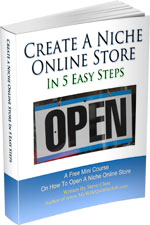
Ready To Get Serious About Starting An Online Business?
If you are really considering starting your own online business, then you have to check out my free mini course on How To Create A Niche Online Store In 5 Easy Steps.
In this 6 day mini course, I reveal the steps that my wife and I took to earn 100 thousand dollars in the span of just a year. Best of all, it's absolutely free!

